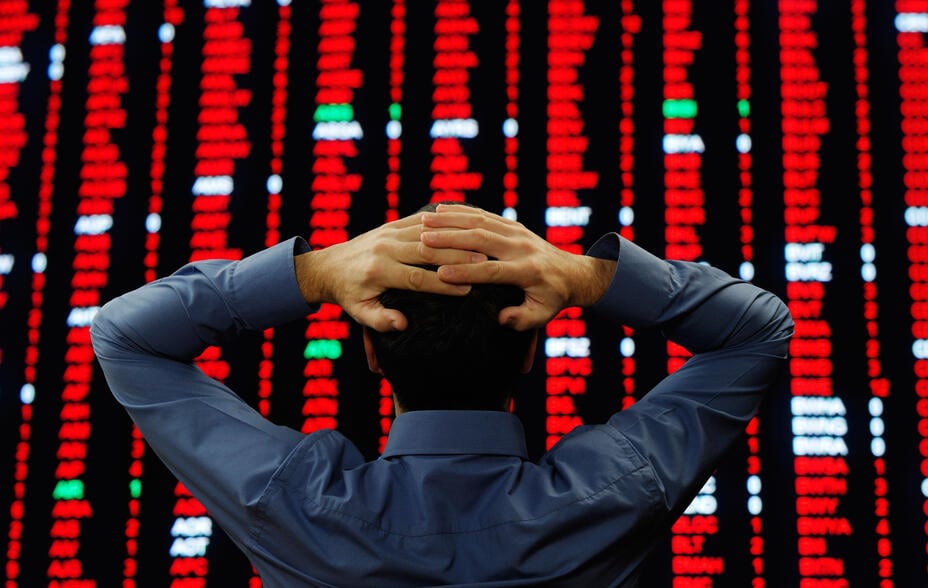
Investors should consider the investment objectives, risks, charges and expenses carefully before investing. This information and other information about the Funds can be found in the prospectus and summary prospectus. For a prospectus and summary prospectus, please visit our website at bailliegifford.com/usmutualfunds. Please carefully read the Fund's prospectus and related documents before investing. Securities are offered through Baillie Gifford Funds Services LLC, an affiliate of Baillie Gifford Overseas Ltd and a member of FINRA.
From the archives: Mark Urquhart (2006):
Having reached the third anniversary of the Long Term Global Growth Team, it seemed an apposite time to step back and reflect on where we have got to in our attempt to invest for the long term.
We try very hard to separate ourselves from short-term pieces of newsflow. The longer I am involved in equity markets, the more I feel a need to deliberately distance myself from the daily grind of news, results, analyst changes and macro noise. This sounds easy to do but in practice can be fantastically difficult as we are bombarded daily with tiny fragments, which over time will make up a long-term mosaic. One has to resist the compunction to try to over-extrapolate from only a few scattered pieces but it often takes a conscious effort to avoid wild extrapolation from the slightest snippet of news. I feel guilty that I often have a compulsion to turn on Bloomberg TV or CNBC after my wife and children are sleeping to find out a quarterly earnings number or where the market has closed. I know that these isolated pieces of information have no bearing whatsoever on the long-term performance of our clients’ assets yet still the compunction is there, tapping me on the shoulder. When I ask myself why I do this, the honest answer is a curiosity to know the information not because I will react to it but just because I want to know.
Reacting to meaningless pieces of individual information is what we try hardest to resist. There is a delicate balance to be struck here because at times the market reaction to such short-term noise will present us with great opportunities to make money, whilst occasionally there will be a signal of a major turning point and change to the answers to one or more of our ten questions. However, I am firmly of the belief that paying too much attention to quarterly earnings releases is hugely dangerous and I and others on the team make a conscious effort not to be dragged into the near obsession with these figures which modern markets possess. To this end, we try to retain our long-term perspective by deliberately allowing some time to pass from an announcement that results in a large share price move to our discussion of any underlying operational issues.
Related to the above is our ability to cope with volatility. The variation we have seen in our short-term returns was entirely expected. I am firmly of the belief that being mentally prepared for being far away from any index in either direction is at least half the battle in terms of not being influenced by short-term performance into making decisions which have deleterious long-term consequences for portfolios. Again, this is easy to say, but hard to do in practice – I am sure some of the explanation for the seemingly inexorable rise in average turnover figures is the desire by market participants to do something at times of large share price moves. The danger here is clearly that we give stocks far too long to prove themselves – we hope to counter this tendency by clearly separating share price underperformance from operational underperformance.
One of the features of equity markets which seems accentuated at times of great volatility is the need for explanation and I am constantly amazed by the ease with which financial journalists can find such certainty in the causes of market advances and falls of the “Markets plunge/soar as investors’ anxiety rises/falls” variety. It is far harder, but much more truthful, to report that the market is a hugely complex entity with large numbers of individuals loosely connected by each other’s behaviour but with many different timeframes and methods of making money. As such, predicting short-term share price moves is little more than a lottery.
The final observation from our first three years is an ever-increasing incredulity at the role which ‘the index’ plays for many investors. Why when stock market history has given us so many examples of risk residing in the index – from railroads to TMT – do market participants still pay so much attention to its make-up? I think much of the answer lies in the security of being close to an index no matter how flawed it may be. At any one moment in time the index is often construed as representing the outcome of market efficiency and therefore not deviating too far from it provides an illusion of safety. We believe that this notion of risk is hugely flawed and it feels that over the last three years we have managed to place more and more land between us and this intellectual Rubicon.
I am proud of the fact that no one on the Global Team knows any of the weights of stocks, sectors and countries in the global index and we have never had one discussion of it. This sounds facetious but is I think absolutely central to the task we have for our clients of finding individual companies with good long-term prospects. I am more convinced than ever that this is a rewarding way to invest and that short-termism, volatility and index obsessiveness at the market level can afford us huge opportunities.
Important information and risk factors
The Funds are distributed by Baillie Gifford Funds Services LLC. Baillie Gifford Funds Services LLC is registered as a broker-dealer with the SEC, a member of FINRA and is an affiliate of Baillie Gifford Overseas Limited. All information is sourced from Baillie Gifford & Co unless otherwise stated.
As with all mutual funds, the value of an investment in the Fund could decline, so you could lose money. International investing involves special risks, which include changes in currency rates, foreign taxation and differences in auditing standards and securities regulations, political uncertainty and greater volatility. These risks are even greater when investing in emerging markets. Security prices in emerging markets can be significantly more volatile than in the more developed nations of the world, reflecting the greater uncertainties of investing in less established markets and economies. Currency risk includes the risk that the foreign currencies in which a Fund’s investments are traded, in which a Fund receives income, or in which a Fund has taken a position, will decline in value relative to the U.S. dollar. Hedging against a decline in the value of currency does not eliminate fluctuations in the prices of portfolio securities or prevent losses if the prices of such securities decline. In addition, hedging a foreign currency can have a negative effect on performance if the U.S. dollar declines in value relative to that currency, or if the currency hedging is otherwise ineffective.
For more information about these and other risks of an investment in the Funds, see “Principal Investment Risks” and “Additional Investment Strategies” in the prospectus. There can be no assurance that the Funds will achieve their investment objectives.
As at December 31, 2024 Baillie Gifford held Aixtron, ASM International, ASML, Soitec. A full list of holdings is available on request and is subject to change.
142807 10053742





